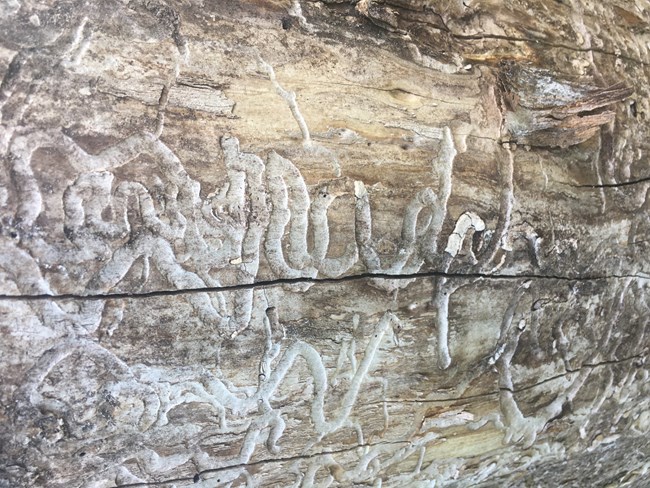Last updated: October 1, 2020
Article
Emerald Ash Borer at Hopewell Culture National Historical Park
Emerald Ash Borer at Hopewell Culture National Historical Park
Written by Biological Technician Alex Smith

NPS photo/A.Smith
Native to northeast Asia, this beetle only infects dying ash trees in its home range. However, once introduced, these insects began a devastating crusade against our native ash trees. Over the last 20 years, the borer has wiped out tens of millions of ash trees across the United States! The presence of the emerald ash borer is unfortunately, best determined by dead ash trees. Infected ash trees will start to show symptoms such as decreased canopy cover, D shaped holes in bark, and bark that peels to reveal winding channels chewed into the wood.
What makes the EAB so deadly is that their larvae feed on the “bloodstream” of the tree. This prevents the tree from transporting energy and nutrients, causing it to slowly die. With no natural immunities to these foreign invaders, nearly all of our ash trees are in danger of being wiped out.

NPS photo/A.Smith
If you come across one of our living ash trees at the park, you can find the small plastic plugs in a spiral pattern around the trunk, that we use to give them their medicine. Once the borers have wiped out all untreated ash trees and have gone away, it is our hope that these healthy trees will provide seeds, to help the next generation of ash recolonize our forests.
While treating healthy ash trees can be very costly, there are other way you can help to stop the spread of EAB. These beetles can only spread one mile per year on their own. Promising to not move fire wood will help to avoid spreading them further. Having dead and dying ash trees removed, can also help prevent the EAB from reproducing, and will protect your property from damage as well.
Our park biologists need your help to stop the spread of this deadly invasive insect. Together, we can be partners in protecting our ash trees from this ruthless invader!
